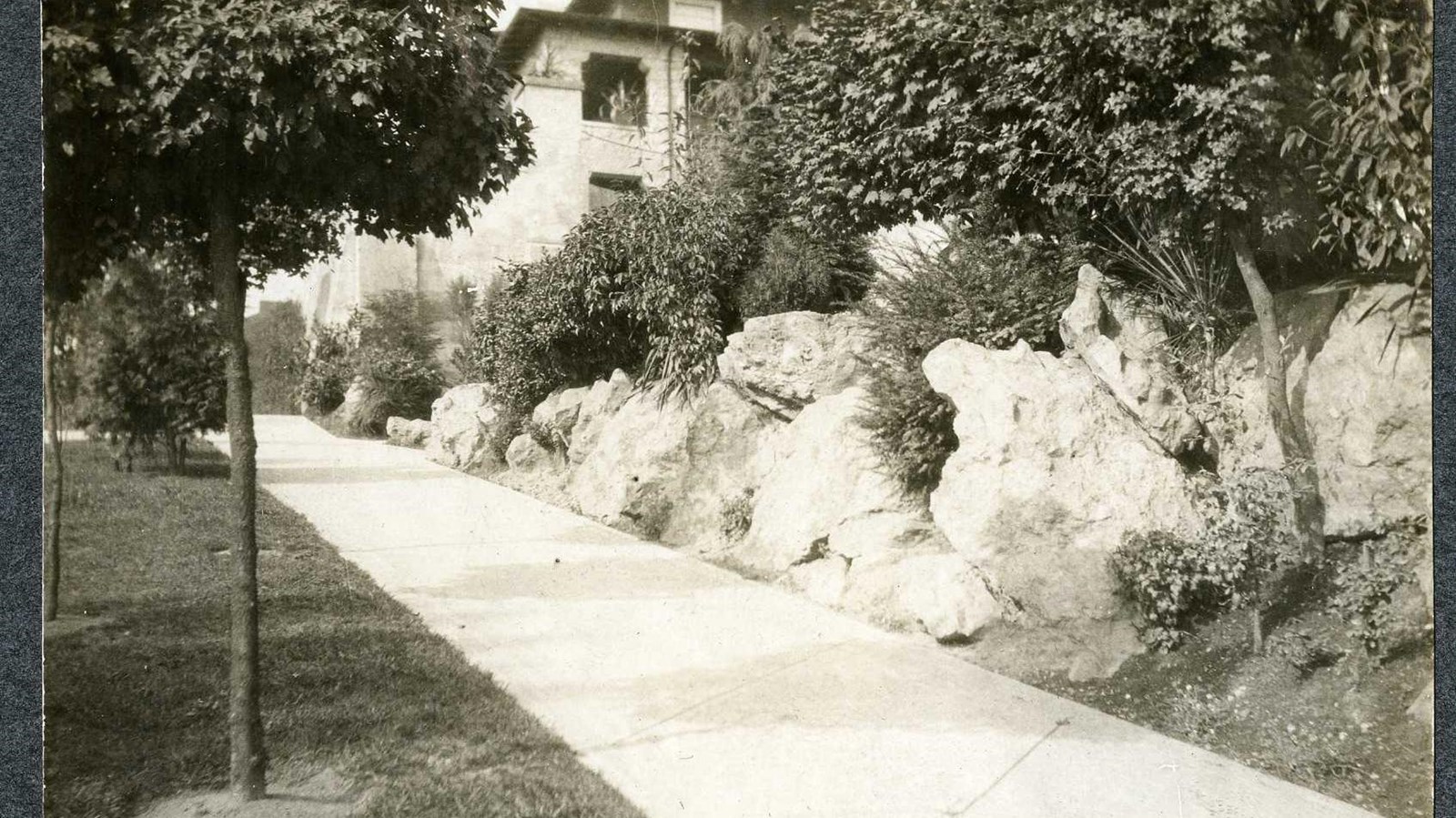Last updated: June 5, 2024
Place
Frink Park

Olmsted Archives
Quick Facts
In his 1903 report on Seattle’s Parks, John Charles Olmsted proposed the ambitious undertaking of acquiring an entire length of steeply sloped area for park purposes, cautioning locals of the land’s unsuitability for a subdivision development. John Charles believed that “Houses will probably continue to be moved gradually on to adjoining land owned by someone else, and there will be no end to the trouble, expense and inconvenience due to the continuation of the slide if it is allowed to become occupied by houses. . .. On the other hand, the movement of the land would be of small consequence if the ground is turned into a public park.”
The land John Charles was working with occupied a wooded ravine with a stream channel winding throughout it. The proposed plan curved along Lake Washington Boulevard, fitting into the slopes as it wound through the park, with John Charles creating a small waterfall as a focal point. Additionally, John Charles placed a network of paths throughout the park, as well as benches and pools. The land was renamed Frink Park to honor the donor who had made the park possible.
Source: "Frink Park," Olmsted Online
For more information and primary resources, please visit:
Olmsted Research Guide Online
Olmsted Archives on Flickr
The land John Charles was working with occupied a wooded ravine with a stream channel winding throughout it. The proposed plan curved along Lake Washington Boulevard, fitting into the slopes as it wound through the park, with John Charles creating a small waterfall as a focal point. Additionally, John Charles placed a network of paths throughout the park, as well as benches and pools. The land was renamed Frink Park to honor the donor who had made the park possible.
Source: "Frink Park," Olmsted Online
For more information and primary resources, please visit:
Olmsted Research Guide Online
Olmsted Archives on Flickr
